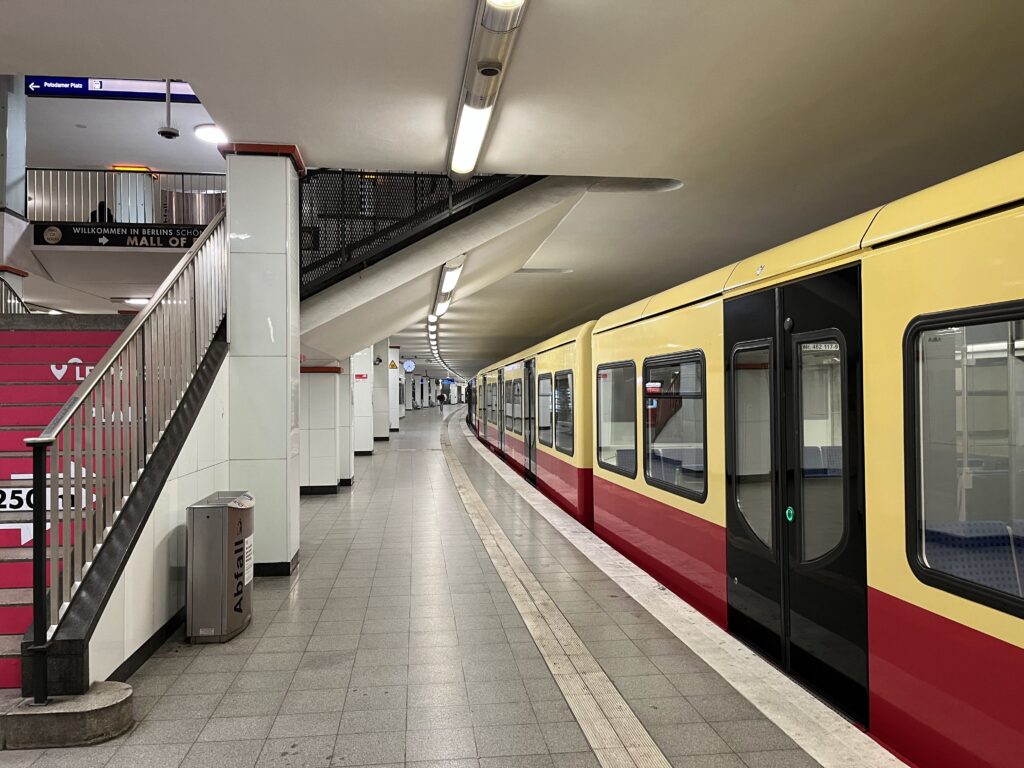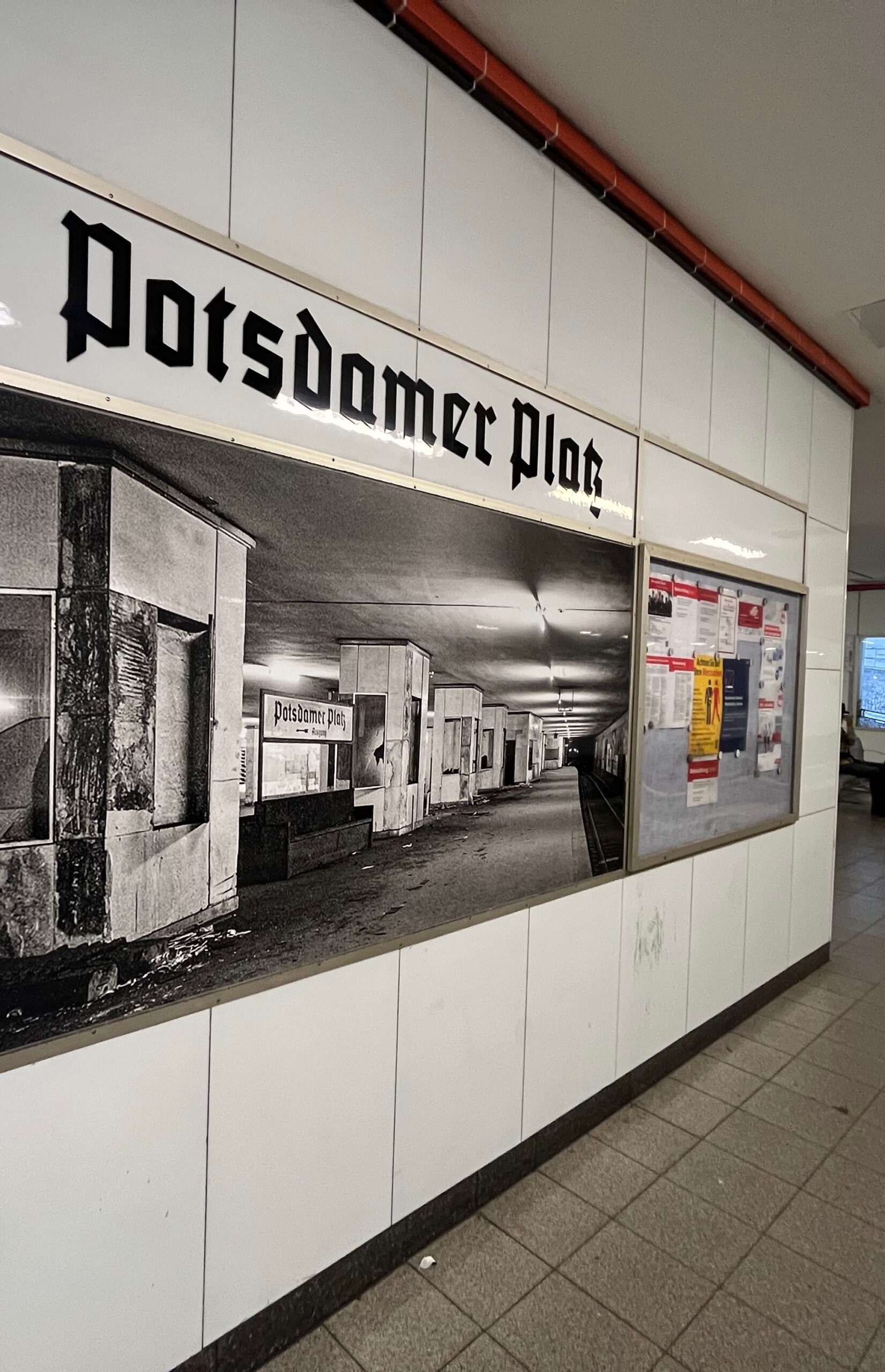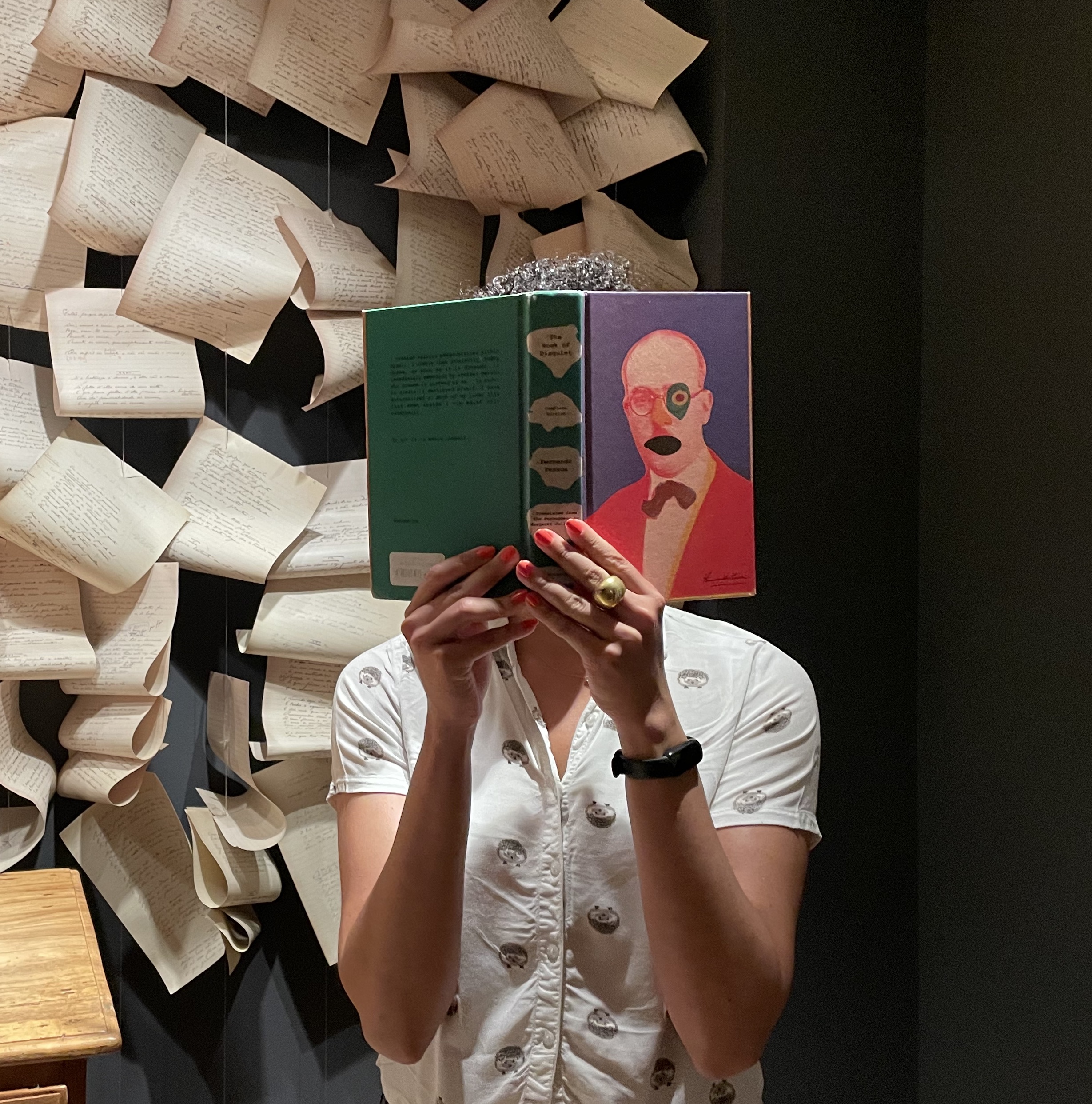Author’s Note:
Cold War divided Berlin haunted me growing up because it was a place where history was unavoidably visible, and when I lived there for two-and-a-half years as a student in the 1990s, I was always watching and trying to document the city’s rapid changes after the Wall fell. In 2022 a cousin found an advertisement on Ebay from circa 1939 that showed images of the Potsdamer Platz S-Bahn station from my great-grandfather’s glass factory in Waldenburg (now Wałbrzych, Poland). I’m still processing what it means to have my family history connected to a place that is a central, broken image of Berlin and so crucial to the imagination of the Cold War, particularly at a time when we in the U.S. are (or should be) thinking about what the world looks like when democracy yields to authoritarianism.

Photo courtesy of author.
Berlin, Germany
Potsdamer Platz, Berlin, April 1939
We were successful in securing major commissions—for the Reichsbahn–
underground station Potsdamer Platz and Anhalter–Bahnhof—and in
fulfilling them on time. Such large-scale projects are crucial for breaking
fresh ground for sales of Opaxit glass.
—Annual Report of the Schlesische Spiegelglas Manufaktur
Carl Tielsch G.m.b.H., 1938
Opening day: they buy their tickets at the counters,
walk through turnstiles, take broad stairs down to wait
for the first trains. Hall and platform clad floor to ceiling
in white Opaxit glass, each column trimmed
at capital and base with orange ceramic tiles.
The station is a wonder, 5000 meters squared of light
and white built for the German people,
cool to the touch, even in the summer’s heat.
Smooth, shining, at the head of the stairs,
an eagle in mosaic spreads its wings, reaching out
into the sea of mottled milk. In its claws the hooked cross,
banded by a ring in red. They step down past it to more mosaic murals:
Wannsee sailboats, Waidmannslust’s lofty trees,
depending on the direction they’ll next take.
Solstice, Berlin, 1987
In 1987 the S-Bahn travels south to north and north to south
and crosses underground through East Berlin. It runs through stations
closed a quarter-century now: entrances boarded up on streets above,
or situated in the border’s no-man’s land. Geisterbahnhof,
the West Berliners say. In ’87 I see guardsmen walk their AK-47s
on the platforms. The trains slow down but never stop. I think,
my mother was born in such a different Germany, but this is true for everyone
—so why can’t I stop looking? Why does a girl, sixteen, half
from one place, half another, remember when all the other kids just say
forget? In ’87 I study bullet-holes on walls of buildings. The walls all say
look back/ don’t look/ look forward/ look this way—or stop—or follow.
It is far north, still light out after ten. When I change trains I notice the rivets
joining the plates that clothe the cars. The shells are yellow above a base of red,
designed, I learn much later, to make the soot the wheels churn up show less.
Potsdamer Platz, December 1989
The border guards take journalists down to record
their futile watch. Border in name only now: all open
overhead, no attempts at flight through this empty station
where trains don’t stop. The camera follows the guards
downstairs through the main transit hall, currently storing rubble
from the dismantled wall. Then observation area built
into the next barrier, 3×3 meters, two small slits of windows,
telephone, thermos pot for coffee (blue), space heater to warm their feet.
Then a final door out to the gutted platform, dimly lit, where the camera
now trains its eye on two young soldiers: they look at the reporter for a full twenty seconds
as he films and only glance away occasionally. This lingering
feels long. The guards patrol. Perhaps the seated guards once guarded
platform guards to ensure they wouldn’t jump a train, flee through tunnels.
Passengers still gaze out their windows when the trains pull slowly through.
Solstice, Berlin, 2022/1990
I’ve found this guy online, Ask for S-Bahn-Matze when you get here,
he writes, directs me to his neighborhood pub, far north,
in Pankow. In the renovated station, I change trains, touch
the gleaming white glass walls. Aboveground, it’s still light.
The regulars chuckle—Matze’s found an audience!?!?—I buy his beer,
we sit outside. He’s brought his laptop, tunnel maps, tells the story
of May 2, ’45: the Landwehrkanal’s floor detonated—SS-sabotage—
the S-Bahn roof collapses, 20 kilometers of tunnels under water,
some containing bomb shelters, temporary hospitals. The many bodies.
Then: We were just two kids from East Berlin in 1990, exploring. (I was
up above with some 350,000 others, watching Roger Waters perform The Wall.)
I pried off four original plates with the station name. Stealing, yes,
but I preserved all that’s left now of the originals: they tossed the rest
into the landfill when rebuilding. We’ll display the old glass in our new museum.
Potsdamer Platz, Berlin, Solstice 1993
Anne gives me two prints she’s made, acid-etching
copper plates: cranes rise up around a skyline
thick with jumbled buildings; an S-Bahn
cuts across the scene. She studied pedagogy
before the wall fell: English/Russian.
Now she’s changed her concentration: English/Art.
“Berlin is a Construction Site,” one print’s title,
the other, “Going Down in Style.”
I change trains now where the Geisterbahnhof was;
crews jackhammer Opaxit off the walls.
I don’t know the tiles are from my family’s factory,
or even that they’re glass. Above, a crane-forest
constructs the Sony Center. Here on the platform,
under floodlights, shards fall at the workmen’s feet.
Monika Cassel’s poems and translations from German have recently appeared or are forthcoming in Bennington Review, Denver Quarterly, Diode, The Georgia Review, Poetry, and Poetry Daily, among others. Her manuscript Rehearsal for Future Hungers was a finalist with River Books, and she was awarded the Poetry Magazine 2024 John Frederick Nims Memorial Prize for Translation. She lives in Portland, OR, is an assistant poetry editor for Four Way Review, and holds an MFA in poetry from Warren Wilson College.



